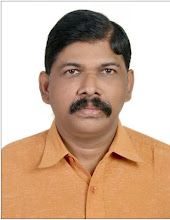Just as 1950 was a seminal year for India after it became a constitutional republic on January 26 of that annum, for the Hindi film industry too it marked a major turning point...it was the start of a Golden Era of unprecedented popularity and high creativity. As we celebrate 70 years ago of the national milestone, I am motivated to explore just how the film industry too embarked on a compelling odyssey seven decades ago.
Firstly, the 1950s engendered more high-wattage stars than earlier decades like the 1930s and 1940s. A cineaste’s eyes are bound to shine just by imagining a decade densely populated by true-blue histrionic legends such as Dilip Kumar, Raj Kapoor, Dev Anand, Nargis, Meena Kumari, Madhubala, Vyjayanthimala, Nutan, Waheeda Rehman, Kishore Kumar, Guru Dutt...this was how ridiculously blessed our immediate post-Republic era was! In comparison, the 1940s had not spawned true cult figures barring a few like Ashok Kumar, K L Saigal (a ’30s holdover), Suraiya and Noorjehan. But the list of saleable stars after 1950 just kept getting longer and stronger.

Furthermore, the films of the 1950s too were markedly different from pre-Independence cinema. India had just emerged from the Independence movement which was immediately followed by the upheavals and horrors of the Partition. There was an efflorescence of cinematic creativity, and sensitive filmmakers now churned out a slew of less verbose, more nuanced classics that tried to not only explore the flaws in humanity but also searched for the humanity in flawed characters.

Contemporary leading men make much noise when they play grey-shaded roles but the leading names of the 1950s beat them to it. Actor-producer-director Raj Kapoor created a seismic sensation when he played the anguished but unapologetic thief in Awaara, the waif who strays from the party of virtue and into the arms of Maya (symbolically embodied by vamp Nadira) in Shree 420 and the gold-digger who breaks Nargis’ heart in Bewafaa. Dilip Kumar too dared to essay a character who seduces Nimmi but wants to remain engaged to Madhubala in Amar. Veteran Ashok Kumar got experimental with Mahal in which he becomes so obsessed with a ghostly apparition (Madhubala) that he cruelly ill-treats his wife. Guru Dutt’s noirish directorial debut, Baazi, and his sophomore venture Jaal skyrocketed Dev Anand to stardom in morally ambiguous roles as a gambler and as a smuggler.

Several renowned auteur-directors defined this era. They pioneered technical innovations (colour films, CinemaScope) but most importantly they fashioned timeless cinema that addressed the socials problems of the age and also depicted the human condition. The world now sat up and took notice of Indian cinema: Mother India became the first Indian film to bag an Oscar nomination. Jagte Raho won a prize at Karlovy Vary and Do Bigha Zameen did so at Cannes. And Awaara simply swept Russia off its feet, fetching Raj Kapoor unprecedented fame in that country.

With his emphasis on eloquent images in Do Bigha Zameen, Devdas and Sujata, Bimal Roy undermined the importance of lengthy dialogue in our films. Guru Dutt’s Pyaasa and Kaagaz Ke Phool poetically questioned the value of fame in a morally compromised world. B R Chopra’s crowd pleasers also had a built-in message: Ek Hi Raasta (widow remarriage), Naya Daur (the human cost of progress), Sadhna (prostitute rehabilitation). V Shantaram’s cinema was accessible yet explored complex themes such as tradition versus modernism in Jhanak Jhanak Payal Baaje, the meaning of freedom in Do Ankhen Barah Haath and fantasy relationships in Navrang. And Mehboob Khan crafted the definitive epic of India’s rural heartland with Mother India, about a woman who is strong and generous like mother earth, but won’t forgive the transgression of her laws.
Mother India’s blockbuster status was driven considerably by Nargis’ star credentials. Fortunately, the fifties saw several leading ladies assume positions of power with well-entrenched careers that lasted for decades. Meena Kumari quickly assumed the make of tragedy queen and bagged the first two Filmfare awards for Best Actress. Vyjayanthimala’s immense success in dance numbers like Nagin’s Man dole mera tan dole made dancing skills mandatory for future heroines. Madhubala’s breath-taking looks entranced the nation. Geeta Bali, Nimmi and Nalini Jaywant were indubitably talented but somehow it was Nutan and Waheeda Rehman who got cast in the truly memorable roles.
The archetypal Indian idiom of filmmaking remained unassailable even when directors veered towards neo-realism (Nirupa Roy wore unwashed clothes bought from Chor Bazaar in Do Bigha Zameen). Songs remained an ineluctable part of our movie-going experience...and breathless superlatives are the only way to describe the film music of this era.
Maybe it is just a coincidence but soon after India became a republic, the film world unleashed a wave of creativity. Today’s film industry is standing on the shoulders of these giants.
Dinesh Raheja is an Indian author, columnist,TV scriptwriter, and film historian. In 2017, he initiated The Dinesh Raheja Workshop in which he teaches Bollywood aspirants everything related to the media.
source https://www.freepressjournal.in/entertainment/bollywood/1950-a-turning-point-for-the-nation-and-for-films






























0 comments:
Post a Comment